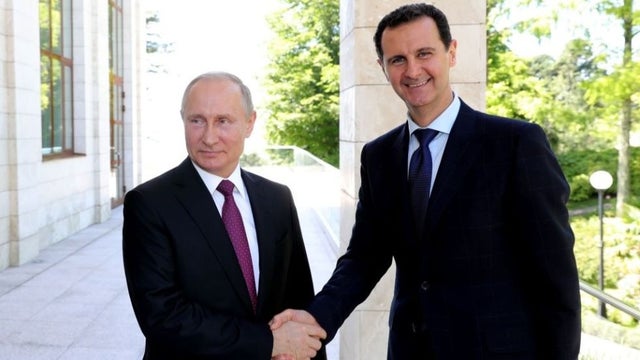What Russia is up to in Syria
Although the world has ground to a near-standstill as a result of COVID-19, America’s foreign policy problems have not disappeared. To the contrary, many are becoming much worse, as dictators across the globe forge ahead with their destructive plans.
Russia’s recent machinations in Syria are a case in point. The Kremlin’s 2015 decision to enter the Syrian civil war on the side of dictator Bashar al-Assad was informed by the “Putin Doctrine,” which had been laid out by Russia’s president in 2008 and the chief focus of which is blunting American influence globally while increasing Russia’s regional status and ability to project power. The subsequent Russian incursion was a prime example of a marriage of Tsarist imperialism and Soviet expansionism: Although Syria’s Ba’athist state does not border the old Soviet empire, it served as a critical piece to Soviet strategy during the decades of the Cold War — and today, of Russia’s, too.
Russia’s activities there over the past half-decade, in turn, have yielded concrete dividends for the Kremlin. Under the guise of an ongoing struggle against ISIS and other “wahhabists,” Moscow has transformed the country into a laboratory for the testing of weapons, technology, strategy, and tactics. In a reflection of this role, the Russian High Command has termed Syria a model for training and its operations there a “strategy of limited action.”
Today, some 5,000 Russian troops, primarily military advisors, special forces, and air support personnel are estimated to operate in Syria. Russia continues to supply Assad with weapons and gives the Syrian dictator much needed diplomatic backing on the international stage. Russian airstrikes, a critical component of the Assad regime’s continued survival, have been directed primarily against rebel forces fighting Assad rather than against ISIS.
These airstrikes, moreover, have indiscriminately targeted Syrian civilians; according to the Syrian Network for Human Rights, the total civilian death toll in Syria since March 2011 was 226,247, with at least 6,514 of them killed directly by the Russians. Other estimates put the number closer to 8,400. Further, the United Nations has accused Russia of engaging in war crimes through indiscriminate airstrikes against civilians that have terrorized the population and displaced large numbers of Syrian people.
Moscow has learned from its past military mistakes, however. Unlike the Soviet experience in Afghanistan in the 1980s, Russia has been very measured in its commitment to the Syrian battlefield. The Russian government has prioritized the use of stand-off tactics (like aerial strikes) and military contractors. The results speak for themselves; as of last Spring, the Kremlin has officially confirmed just 116 Russian fatalities.
At the same time, Russia has put a premium on strengthening its military foothold in the country. It has reinforced its naval presence in the southern port city of Tartus, erected an airbase at Hmeimim, and created military encampments elsewhere in the country. For these facilities, Moscow has managed to secure long-term, open-ended leasing arrangements from the Assad government, which remains weak and is eager to see Russia stay and provide security protection.
Economically, Russia has deftly exploited Syria’s precarious situation. Its energy conglomerate Stroytransgaz (which has been sanctioned by the U.S. Treasury Department) dominates the Syrian energy sector, developing gas fields whose revenue feeds Assad’s killing machine. The company has secured contracts for exploiting hydrocarbons in eastern Syria, completing pipelines linking Syria and Jordan, multiple gas processing plants, and is given preferential treatment by the Assad regime.
These activities, and Russia’s continued presence in Syria, represent a threat to American interests. They help to undermine U.S. foreign policy in the Middle East and the eastern Mediterranean. They have allowed the Kremlin to reemerge as a serious player in regional politics and begin to shape Middle Eastern affairs in its image. And they have helped to strengthen Russia’s long-standing ties to Iran, which is also aiding Syria, and which the Trump administration continues to seek to isolate and contain. As such, Moscow’s machinations should be understood for what they are, a serious national security concern for the United States, and should be treated as such by Washington.
The views expressed in this article do not necessarily reflect the views and editorial stance of the SOHR.

